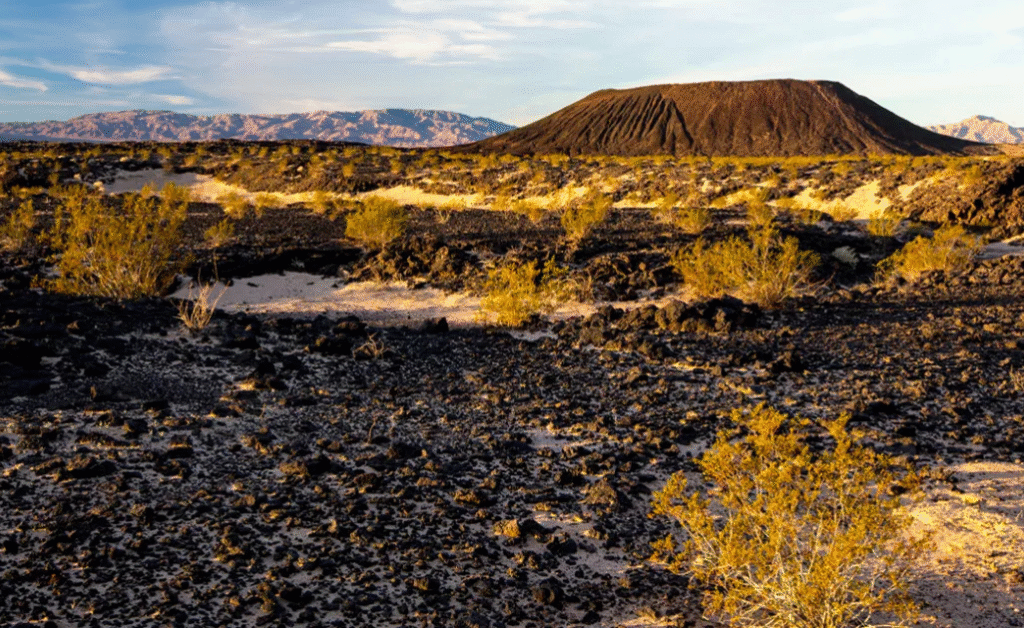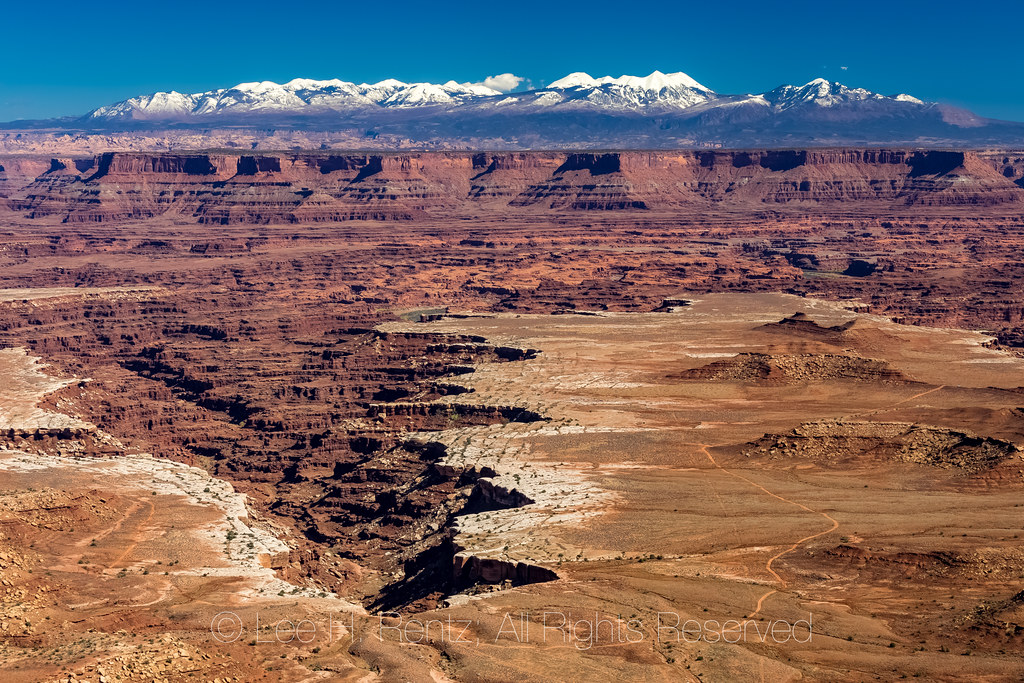Introduction
Ever wondered what it would feel like to step inside an ancient volcano? Welcome to Amboy Crater, an incredible volcanic cinder cone right in the middle of the Mojave Desert in California. Though now extinct, this geological marvel still tells stories of its fiery past. It’s raw, quiet, remote—and absolutely mesmerizing.
Whether you’re a geologist, a Route 66 road-tripper, or just someone who loves untouched natural beauty, Amboy Crater has a certain magnetism that draws you in.
Geological Overview
How Amboy Crater Formed
Roughly 79,000 years ago, a fiery eruption cracked through the Mojave Desert floor. Molten basalt erupted violently, forming a 200-foot-high volcanic cinder cone—what we now call Amboy Crater.
Lava spewed across the desert, creating a vast lava field that stretches for 24 square miles. What’s wild is how well-preserved it is. You can still walk the flows and see evidence of its violent birth.
The Science Behind the Volcanic Cone
Amboy Crater is a monogenetic volcano, which means it only erupted once. Scientists have studied its shape, structure, and materials, finding volcanic bombs, ash, and scoria, all indicators of a powerful single event.
Location and Access
Where is Amboy Crater Located?
Located just off Historic Route 66, between Barstow and Needles in San Bernardino County, Amboy Crater sits in the Mojave Trails National Monument. You’ll find it just a few miles west of the tiny town of Amboy.
How to Get There
- From Barstow: Drive about 75 miles east on Route 66.
- From Needles: Drive 85 miles west on Route 66.
There’s a dedicated parking lot and trailhead right off the road, making it surprisingly accessible for such a remote landmark.
Best Time to Visit
Visit between October and April to avoid the brutal summer heat. Early mornings and late afternoons are ideal for hiking and photography.
Historical Significance
Native American Connection
Long before Route 66, the land around Amboy was traversed by Native American tribes. Many believe the crater was considered a sacred site, and archaeological findings suggest it was once part of ancient trade routes.
Role During Route 66’s Heyday
Back in the glory days of Route 66, Amboy was a lively pit stop. Travelers would stretch their legs, take photos of the crater, and stop by Roy’s Motel and Café—a Route 66 icon that still stands today.
Amboy Crater’s Role in Tourism
A Hidden Gem on Route 66
Amboy Crater isn’t your typical tourist trap. That’s its charm. Most travelers discover it by chance, but once they do, they’re captivated. There’s something thrilling about visiting a place untouched by modern commercialism.
What Draws Visitors?
- Natural beauty
- Quiet solitude
- Stunning stargazing
- Easy hiking access
It’s like stepping into another world.
Hiking to the Crater
Trail Information
A 1.5-mile trail leads from the parking area to the crater’s base, with another 0.5 miles to the top if you choose to climb. The full round-trip is about 4 miles.
What to Expect on the Hike
- Loose lava rock underfoot
- Stunning panoramic desert views
- A steep but rewarding climb to the crater’s rim
Inside the crater, it’s like walking into a bowl-shaped lunar landscape.
Safety Tips for Hikers
- Carry plenty of water (1 gallon per person)
- Wear sturdy shoes (lava rock can be sharp)
- Avoid hiking in extreme heat
- Watch out for rattlesnakes and other desert critters
Flora and Fauna
Desert Life Around Amboy
It might look barren, but the area surrounding Amboy is full of life.
Surprising Biodiversity
- Creosote bush, cactus, and desert wildflowers in spring
- Lizards, jackrabbits, and even the occasional coyote
- In spring, wildflowers bloom and color the desert in hues of yellow, purple, and pink
What to Pack
Essentials for Day Hikers
- Water, water, water!
- Sunscreen and sunglasses
- Lightweight hat
- Snacks or energy bars
Gear Tips for Desert Exploration
- A camera with a wide lens
- A field guide if you enjoy identifying plants or rocks
- A flashlight if you’re staying past sunset
Nearby Attractions
Roy’s Motel and Café
You can’t visit Amboy without snapping a picture at Roy’s Motel, one of the most iconic neon signs on Route 66.
Mojave Trails National Monument
Explore nearby lava tubes, sand dunes, and endless desert vistas.
Other Route 66 Highlights
- Cadiz Dunes Wilderness
- Bagdad Café
- Pisgah Crater (another volcanic site)
Photography and Stargazing
Best Spots for Photography
- Sunrise and sunset at the rim
- Interior shots of the crater bowl
- Foreground lava fields with a wide sky
Why It’s a Stargazer’s Paradise
There’s virtually no light pollution out here. On a clear night, the Milky Way glows, and meteor showers look surreal.
Environmental Preservation
Conservation Efforts
Managed by the Bureau of Land Management (BLM), Amboy Crater is protected to preserve its geological features and desert ecosystem.
Leave No Trace Principles
- Don’t carve into rocks
- Pack out all trash
- Stay on designated trails
Help keep this place magical for future explorers.
Weather and Climate
Typical Weather Patterns
- Summers: 100°F+ (not recommended)
- Winters: 50–70°F (ideal for hiking)
- Nights: Can drop to freezing
Seasonal Tips
Spring and fall are the golden seasons. You get good weather, possible wildflowers, and far fewer people.
Travel Tips
Where to Stay
- Barstow or Needles for full accommodations
- Primitive camping allowed near the site (no amenities)
Closest Gas Stations and Amenities
Roy’s Café sometimes offers basics, but come prepared—nearest full-service gas is often 30+ miles away.
Local Stories and Legends
The Crater’s Mysterious Past
Some say UFOs have been spotted hovering near the crater. Others talk of spiritual energy or ancient desert spirits. While those may be tall tales, they sure add to the mystique.
Conclusion
Amboy Crater is not just a pit stop—it’s an experience. Whether you’re standing at the rim looking out over ancient lava flows or lying under a sea of stars, you feel a connection to something timeless. It’s remote, it’s wild, and it’s real.
Next time you’re driving Route 66, pull over and take a walk through time. You won’t regret it.
FAQs
1. Is Amboy Crater still active?
No, Amboy Crater is extinct. It last erupted approximately 79,000 years ago and hasn’t shown signs of activity since.
2. Is it safe to climb Amboy Crater?
Yes, but be cautious. The trail includes loose volcanic rock and steep sections. Wear good shoes and carry water.
3. Can I camp near Amboy Crater?
Yes, but it’s primitive. No restrooms or water. Be sure to pack everything in and out.
4. Are dogs allowed on the trail?
Yes, but due to the heat and sharp lava rock, it’s best to go during cooler months and bring dog booties.
5. Do I need a permit to hike Amboy Crater?
No permits are required for day hikes. Just follow the posted rules and respect the land.



